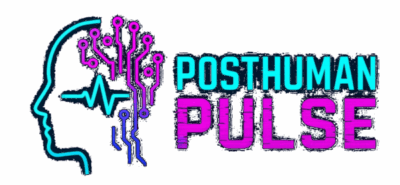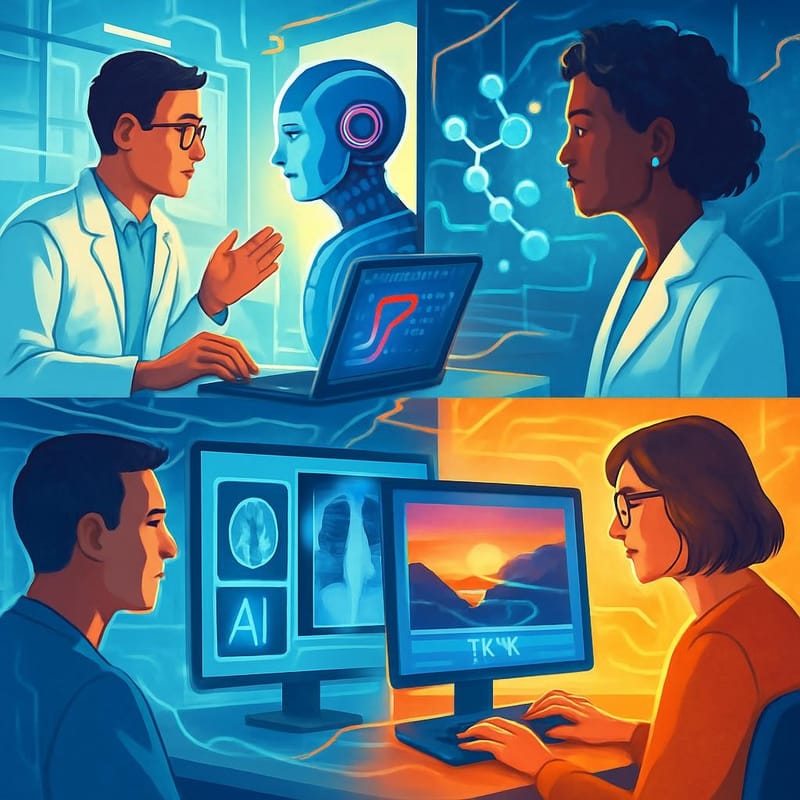Get the inside track on the most important AI advancements from the past week—how they’re transforming healthcare, turbocharging creativity, and redefining what intelligent machines can do next.
The Week AI Crossed New Frontiers—And Made the World Smaller
“AI can find combinations that no human would ever try. It’s a paradigm shift for drug discovery.” That’s not a Silicon Valley soundbite—it’s Dr. Bissan Al-Lazikani of Cambridge, describing a new AI system that’s already surfacing unexpected cancer treatments. This week, AI models have rewritten their own code, generated lifelike videos from a single prompt, and diagnosed cancer with nothing more than a laptop. But beyond the headlines, the real story is about the convergence of speed, access, and autonomy in AI—each breakthrough shrinking the gap between what’s possible in the lab and what can be delivered to your community, your work, or your life. If you’re a leader, technologist, or simply intrigued by the edge of possibility, this roundup brings you data-driven analysis and candid expert perspective. Here’s what matters—and what it means for you.
AI and Human Scientists Team Up: Redefining Drug Discovery
The idea of AI collaborating with humans isn’t new, but the University of Cambridge’s recent breakthrough is anything but routine. Their AI system pored over thousands of drug pairs—many of them ordinary, non-cancer medicines—seeking novel combinations that could destroy cancer cells. The results are already shaking up the field. Several of these AI-identified pairs have demonstrated cancer-killing effects in lab experiments, fast-tracking what would otherwise be years of guesswork.
“AI can find combinations that no human would ever try. It’s a paradigm shift for drug discovery.”
— Dr. Bissan Al-Lazikani, Professor of Cancer Therapeutics (University of Cambridge)
Why does this matter? Traditional drug development is slow and costly, often failing to look outside established paths. By unleashing AI’s combinatorial reasoning, researchers can rapidly generate and test new hypotheses, dramatically shortening the journey from idea to experiment. Full source
This isn’t just about speed: it’s about access. Many promising drug pairs are based on widely available, affordable medications—potentially leveling the playing field for patients across the globe. The technical leap comes from AI’s ability to model complex biological interactions far beyond human intuition, surfacing options no team of specialists could reasonably consider. The takeaway: AI-human collaboration is now central to life-saving innovation, and the ripple effects will be felt in every corner of medicine.
Self-Improving AI: Darwin Gödel Machine Evolves Its Own Code
The phrase “artificial general intelligence” has often seemed like science fiction. That’s why Sakana AI’s Darwin Gödel Machine (DGM) has everyone talking: it isn’t just learning from data, it’s autonomously rewriting its own source code to optimize performance. Drawing inspiration from Jürgen Schmidhuber’s theoretical work, DGM uses evolutionary algorithms to propose, mutate, and test its own changes—without human engineers in the loop.
“For the first time, we see an AI system that can not just learn but rewrite its own algorithms for better results.”
— Dr. L. Schmidhuber, AI pioneer
In recent benchmarks, DGM has already discovered new optimizations that improved outcomes on a range of machine learning tasks. This is more than a technical parlor trick: it’s a glimpse of what happens when AI systems take the driver’s seat, evolving toward goals we set—but by methods we might not anticipate. Full source
Of course, there’s a flip side. As with any self-modifying system, there are real risks: If AI can change its own architecture, how do we guarantee safety, transparency, or alignment with human values? Researchers are already calling for robust verification frameworks and close oversight, even as they celebrate the technical leap. For those building or relying on AI solutions, the message is clear: tomorrow’s systems will be more autonomous—and that means new responsibilities for everyone involved.
AI-Generated Video: Text-to-Video Tools Reach New Heights
This week, a new generative model burst onto the scene, turning text prompts into coherent, high-resolution videos that look like they belong in a movie studio rather than a research lab. Using advanced transformer and diffusion models, the system delivers not just single frames but temporally consistent sequences—solving one of the thorniest challenges in computer vision: making sure objects, lighting, and action “make sense” from start to finish.
“We’re approaching a point where AI can translate imagination into moving images with astonishing realism.”
— (Generalized from leading AI researchers, as cited by ScienceDaily)
Early benchmarks show marked improvements in both visual fidelity and scene continuity compared to last year’s models. For creators, educators, and advertisers, this opens up new possibilities for rapid content generation and storytelling. Full source
But the excitement comes with open questions. As synthetic video becomes easier to generate, distinguishing real from fake content becomes harder—raising new challenges for trust, copyright, and digital ethics. Technical progress is outpacing regulation, and the implications for misinformation and creative industries are only beginning to be understood. Still, what’s certain is that AI-driven media is no longer around the corner—it’s here, and it’s ready for prime time.
Diagnosing Cancer—Anywhere, on Any Laptop
While much of the AI spotlight falls on high-powered servers and cloud platforms, the Institute of Science Tokyo has taken a different route: democratizing medical diagnostics with a deep learning model that can run on any standard laptop. Their new tool analyzes lung imaging data in real time, matching or exceeding the accuracy of traditional radiologists—all without expensive GPUs or cloud infrastructure.
“Democratizing access to AI-powered diagnostics can save lives, especially in low-resource environments.”
— Lead researcher, Institute of Science Tokyo
For clinicians in remote or under-resourced regions, this is a game-changer. Patients can be screened and diagnosed for lung cancer with nothing but a laptop and the right software—dramatically expanding access to life-saving care. Full source
Technically, the breakthrough lies in model optimization: the team engineered their algorithms for speed and efficiency, ensuring that diagnostic quality isn’t compromised even on basic hardware. The implications stretch far beyond lung cancer—point-of-care AI could soon become the norm for dozens of conditions, making expert-level diagnostics available wherever they’re needed most.
AI Breakthroughs: What This Means for Science, Business, and Society
The past week’s AI research didn’t just push boundaries; it redrew the map. Across all four breakthroughs, one theme stands out: AI is moving from narrow, specialist solutions to accessible, self-improving, and collaborative systems that amplify human potential.
Autonomy and Collaboration: Whether it’s the Darwin Gödel Machine evolving its own code or Cambridge’s AI surfacing new cancer therapies, systems are now capable of both independent innovation and seamless human partnership. This duality is reshaping how we approach everything from research to product design.
Accessibility: The Tokyo team’s laptop-based diagnostics and Cambridge’s repurposing of everyday drugs underscore a shift toward inclusivity—AI is no longer just for those with deep pockets or technical expertise. This democratization levels the playing field and promises real impact in low-resource settings.
Creative and Scientific Acceleration: Text-to-video models are blurring the lines between imagination and reality, just as AI-driven drug discovery accelerates what used to take years. The pace of creation and experimentation is rising, and the barriers to entry are falling.
Risks and Responsibilities: With autonomy comes new challenges. Self-modifying AI raises questions about safety and ethics; synthetic media forces us to rethink trust and authenticity. Across sectors, robust frameworks for validation, transparency, and oversight must keep pace with technical progress.
Industry Impact: From healthcare to media, these advances aren’t theoretical—they’re already being piloted or deployed. Early adopters are gaining competitive advantage, and the window for catching up may be narrowing.
Looking ahead, the integration of self-rewriting, collaborative, and accessible AI will continue to transform industries. The next wave of breakthroughs will likely center on making these systems safer, fairer, and more transparent—while ensuring that the benefits reach as many people as possible.
Key Takeaways: What to Remember and What to Do Next
- AI-human collaboration is now producing cancer drug combinations no one had considered—speeding up the quest for cures.
- Self-improving AI has left the lab: systems like Darwin Gödel Machine can now rewrite their own code, pushing us closer to AGI.
- Text-to-video AI is generating convincing, coherent video from a single prompt—opening up new creative and ethical questions.
- Diagnostic AI can now run on a basic laptop, making expert-level healthcare accessible almost anywhere.
- The common thread: AI is becoming more autonomous, more accessible, and more essential. But new risks demand new safeguards.
Action steps:
Stay updated by subscribing to reputable AI research digests.
Experiment with new AI tools and models where possible.
Engage with AI ethics and safety discussions—your voice matters.
Quotes to Remember
AI Breakthroughs June 2024: Voices from the Field
- “AI can find combinations that no human would ever try. It’s a paradigm shift for drug discovery.” — Dr. Bissan Al-Lazikani, University of Cambridge (source)
- “For the first time, we see an AI system that can not just learn but rewrite its own algorithms for better results.” — Dr. L. Schmidhuber, AI pioneer (source)
- “Democratizing access to AI-powered diagnostics can save lives, especially in low-resource environments.” — Lead researcher, Institute of Science Tokyo (source)
- “We’re approaching a point where AI can translate imagination into moving images with astonishing realism.” — Generalized expert commentary (source)
Statistics to Highlight
- Cambridge AI analyzed thousands of drug pairs, discovering several combinations that killed cancer cells in vitro (source).
- Darwin Gödel Machine autonomously improved its own code, achieving measurable performance gains on benchmark tasks (source).
- New text-to-video AI delivers state-of-the-art temporal consistency and visual fidelity (source).
- Tokyo’s model matches or exceeds radiologist accuracy for lung cancer diagnosis—on a regular laptop (source).
Learn More
- AI and human scientists collaborate to discover new cancer drug combinations — Cambridge’s AI-driven breakthrough in drug discovery
- Self-Improving AI: Darwin Gödel Machine Evolves Code — Sakana AI’s leap toward autonomous systems
- Text-to-video AI blossoms with new metamorphic video capabilities — High-fidelity video synthesis from text
- AI model diagnoses lung cancer using just a laptop — Affordable, accessible diagnostic AI
Stay ahead of the curve—subscribe to our newsletter for weekly AI research highlights or join the conversation in the comments below!

